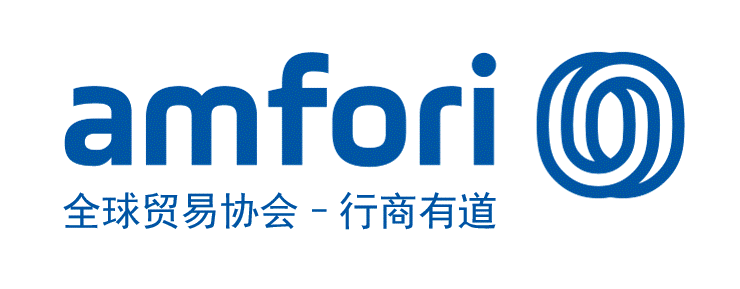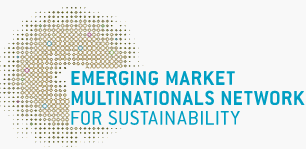Shaping leadership of Chinese companies in low-carbon actions
2022-02-01可持续发展经济导刊GoldenBee0
COP26 is the first conference of the parties held since the Paris Agreement was implemented. This negotiation on the global climate crisis, is generally considered to be a "key opportunity to get the climate goal on track" and is also highly anticipated by all countries in the world.
The host country, the United Kingdom, hopes to promote the global climate process with a focus on three other areas: climate finance, phasing out coal, and nature-based solutions at this conference; China expects COP26 to complete the negotiation of the remaining issues of the Paris Agreement implementation rules, and make effective progress on issues such as funding, technology, and capacity building support. Moreover, China hopes that this conference will highlight "implementation", actively advocate all parties to effectively transform the goals into policies, measures, and actions, and avoid goal-setting or goal-improving into a lip service or differentiated accusation.
In the important period for human society to respond to climate change and the critical moment of the reconstruction of the global climate governance system, Chinese companies should actively participate in global climate governance while expanding their influence in economic activities, demonstrating the responsibility and leadership in low-carbon actions. They should set an example for foreign companies to engage in the global climate governance. Chinese companies should incorporate climate change into their corporate development strategies, promote sustainable business models and solutions to climate change, and use China's key to open a new door to the sustainable development of the world economy.
So, how can Chinese companies accelerate their shift to sustainable development, comprehensively shape their leadership in low-carbon actions, and make greater contributions to combating climate change? Yu Zhihong, President and Editor-in-Chief of China Sustainability Tribune, and initiator of GoldenKey Campaign, shared his thoughts and observations in the Report on the Shaping of Low-carbon Leadership of Chinese Enterprises by GoldenKey Campaign (scan the QR code at the end of the article to read the summary report).
GoldenKey Solutions are not only an important representative of Chinese companies’ contributions to the UN Sustainable Development Goals, but also an example of actions that contribute to the goals of carbon peak and carbon neutrality. Looking at the basic characteristics of GoldenKey low-carbon actions, we believe that Chinese companies need to start from the following aspects in shaping their leadership in low-carbon actions:
Seeking the commanding height of low-carbon development from a long-term perspective. The realization of the goals of carbon peak and carbon neutrality is a long-term strategic process and a profound systemic change that cannot happen overnight. It requires businesses to seek the commanding height of the two goals from a long-term perspective.
Companies should grasp the content of the “1+N” model for the realization of the two goals, and integrate their low-carbon actions into national strategies according to the national top-level design as well as the trends of industry transformation and technological development. They should also incorporate low-carbon development into their mid- and long-term strategies, and make greater efforts in creating new business and industry models based on their respective strengths in competing with others for realizing the goals of carbon peak and carbon neutrality.
Pursuing low-carbon development based on characteristics of businesses. Low-carbon practices under good leadership focus on the company’s own businesses, with special attention paid to the closest links between the company’s businesses and low-carbon development. Such practices not only promote low-carbon development of businesses, but also allow the company to re-examine and adjust its businesses with the perspective of low-carbon development.
For example, energy companies need to predict the future of energy development while continuously optimizing the existing energy structure; manufacturing companies need to promote low-carbon production while evaluating new products and services from the perspective of green development; digital companies shall support green development in other sectors through intelligent approaches based on the characteristics of their own businesses while pursuing low-carbon development.
Finding the root causes of problems. Accuracy, Match, Innovation, Value, and Evaluation are the five factors of GoldenKey Solutions. The Accuracy means to pinpoint the causes to better hunt possible solutions. Innovation and Value are the cores of GoldenKey Solutions and aims to encourage companies to apply innovation to relieve key barriers.
GoldenKey AMIVE criteria (Five factors of GoldenKey Solutions)
Accuracy
Match
Innovation
Value
Evaluation
Resonate with stakeholders for positive evaluations
This approach is also applicable when companies strive to realize excellent low-carbon actions. In the process of achieving the goals of carbon peak and carbon neutrality, companies face many obstacles, difficulties and pain points, such as those related to energy transformation and technical problems. All these require companies to define problems accurately and tackle difficulties with innovation, so as to realize low-carbon development.
Valuing exchanges, cooperation and benefit sharing. The goals of carbon peak and carbon neutrality are not simply an environmental issue, but require companies to include environmental, economic, and social factors, and integrate various resources. Under this circumstance, exchanges and cooperation become quite important. On the one hand, the model and results of low-carbon actions need to be widely recognized before they are promoted more extensively and their value released more thoroughly. On the other hand, only low-carbon actions based on cooperation can create a development mechanism for the industry chain to share related results.
This article is translated from China Sustainability Tribune.

Report in Chinese

Report in English
Best Practices
- The 100-year brand — Air Liquide also has a sense of juvenile
- Beijing Public Transportation Corporation: Developing green transportation to build a harmonious and livable capital
- CGN: Building a modern factory in barren deserts and developing a new win-win cooperation model along “Belt and Road”
Upcoming Event

All the materials on the site “Source: XXX (not from this site)” have been reprinted from other media. They do not imply the agreement by the site.
All the materials with “Source: CSR-China Website” are the copyright of CSR-China Website. None of them may be used in any form or by any means without permission from CSR-China Website.
GoldenBee Official WeChat
Copyright © Csr-china.net All Right Reserved.
京ICP备19010813号










